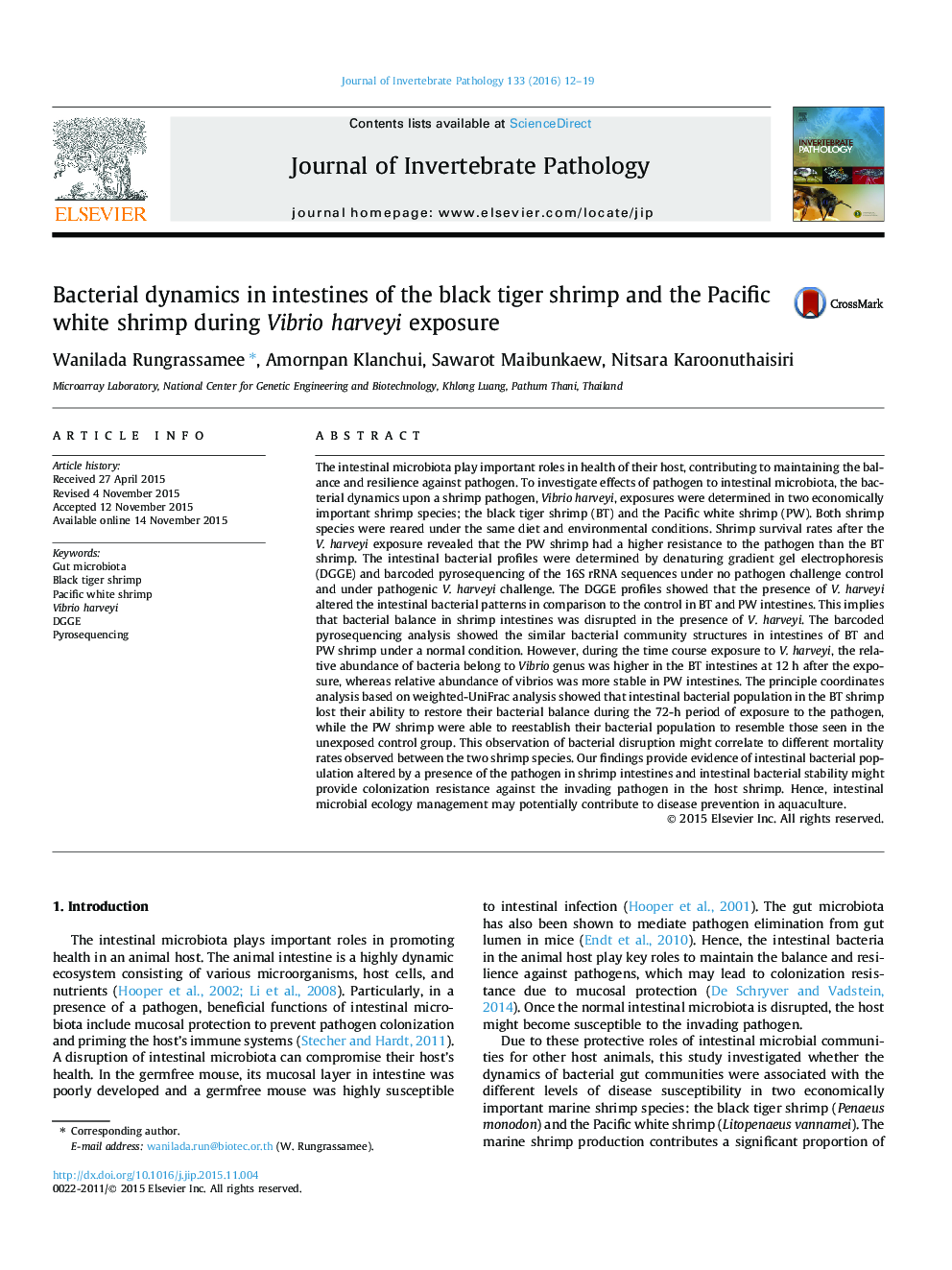| کد مقاله | کد نشریه | سال انتشار | مقاله انگلیسی | نسخه تمام متن |
|---|---|---|---|---|
| 4557604 | 1628219 | 2016 | 8 صفحه PDF | دانلود رایگان |

• Survival rates and intestinal bacteria in shrimp to Vibrio harveyi are determined.
• Pacific white shrimp show a higher survival rate than the black tiger shrimp.
• Intestinal bacteria are disrupted in both shrimp during the pathogen challenge.
• Pacific white shrimp regain their bacterial balance after 72-h pathogen exposure.
The intestinal microbiota play important roles in health of their host, contributing to maintaining the balance and resilience against pathogen. To investigate effects of pathogen to intestinal microbiota, the bacterial dynamics upon a shrimp pathogen, Vibrio harveyi, exposures were determined in two economically important shrimp species; the black tiger shrimp (BT) and the Pacific white shrimp (PW). Both shrimp species were reared under the same diet and environmental conditions. Shrimp survival rates after the V. harveyi exposure revealed that the PW shrimp had a higher resistance to the pathogen than the BT shrimp. The intestinal bacterial profiles were determined by denaturing gradient gel electrophoresis (DGGE) and barcoded pyrosequencing of the 16S rRNA sequences under no pathogen challenge control and under pathogenic V. harveyi challenge. The DGGE profiles showed that the presence of V. harveyi altered the intestinal bacterial patterns in comparison to the control in BT and PW intestines. This implies that bacterial balance in shrimp intestines was disrupted in the presence of V. harveyi. The barcoded pyrosequencing analysis showed the similar bacterial community structures in intestines of BT and PW shrimp under a normal condition. However, during the time course exposure to V. harveyi, the relative abundance of bacteria belong to Vibrio genus was higher in the BT intestines at 12 h after the exposure, whereas relative abundance of vibrios was more stable in PW intestines. The principle coordinates analysis based on weighted-UniFrac analysis showed that intestinal bacterial population in the BT shrimp lost their ability to restore their bacterial balance during the 72-h period of exposure to the pathogen, while the PW shrimp were able to reestablish their bacterial population to resemble those seen in the unexposed control group. This observation of bacterial disruption might correlate to different mortality rates observed between the two shrimp species. Our findings provide evidence of intestinal bacterial population altered by a presence of the pathogen in shrimp intestines and intestinal bacterial stability might provide colonization resistance against the invading pathogen in the host shrimp. Hence, intestinal microbial ecology management may potentially contribute to disease prevention in aquaculture.
Figure optionsDownload as PowerPoint slide
Journal: Journal of Invertebrate Pathology - Volume 133, January 2016, Pages 12–19